JYSK style guide
Last edited: 28/03/2025
JYSK’s different photo types
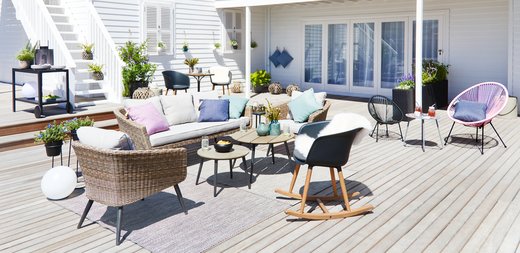
- Cut out photos
-
The purpose of cut out photos is to display the product itself clearly and simply with 100% product
focus. Cut out photos in respective product groups should be photographed as uniformly as possible,
as they will be presented side by side in campaign papers and online. Specifications can be found in
the matrices of the respective product groups together with a reference photo detailing how the
photo should be taken. Please contact photo department for details.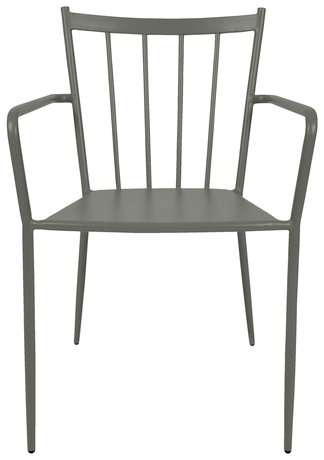
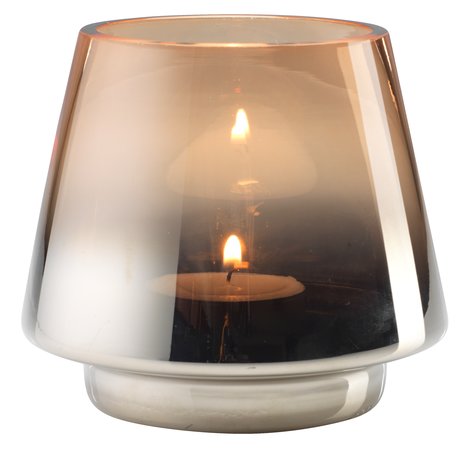

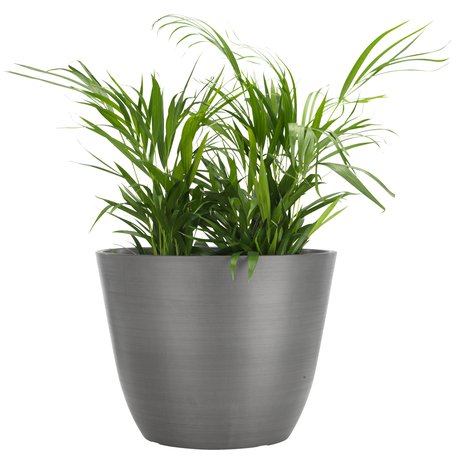
Angle
Because our photos are retaken over a long period of time – sometimes several years – it can be
difficult to hit the exact same angle and height each and every time. That is why it is important for our
photographers to compare any available reference photos and any self-made facades, etc. with the
new photo, in order for the result to be as uniform as possible. All articles have reference photo in the respective photo matrices.Lighting
When taking photographs at different times of day, it may be impossible to recreate the exact lighting
as before. That is why it is important to use a reference photo for the products that are to be matched
with an existing photo (e.g. a furniture series of the same wood type or a duvet that is to be matched
with a pillow from the same series).Crop tool
Our online system does not simply include the cut out product in its original setting, as it also incorporates
a white background around it. That is why it is essential to crop the area around the product as
closely as possible. Because this is a manual process, there may be some differences from photo to
photo. However, if the difference is too great after the photo has been cropped, it may give the
impression that products shown online appear to be of different sizes.Assorted products
As a rule, assorted products are photographed together. When there are many assorted products, it is
no longer suitable to photograph them together, as it is difficult to see each product and focus is
drawn away from the products themselves. In such cases, several photo orders will be made for the
assorted products. Alternatively, some of the colours/designs can be chosen, and only a few selected
products are featured in the photo. - Environment photos
-
The purpose of environment photos is to present products in a room set that reproduces an inspiring ambience and provides inspiration. In environment photos, we try to create the illusion of a real home either on location or in a studio setting. We “borrow” from the quality and authenticity of the location to raise the look and appearance of our products, meaning that with a better and trustworthy location,
with real Nordic daylight and with nice props the nicer our products will be presented. We can also place the products in a completely different type of room set and make it cosy and inspiring. Environment photos should be varied as much as possible, so that the location/room/angle/colours vary to the greatest possible extent. Scandinavian Expression is, however, the common thread that we should
follow in all of our room setting photos. Because the products are used in a room set together with props, there is less product focus in environment photos than in cut out. Environment photos can advantageously be photographed with a reasonably low shot angel, but we must have in mind that it won’t compromise the product focus and that the same photos can be used in all media.
Primary and secondary products
As a rule, there can be primary focus on 3 products – primary products – in an environment photo (e.g. 2 sofas + 1 coffee table, or a dining table + chairs + sideboard). Other products in the photo become secondary products and props.
Secondary products are those that can be shown together with primary products and are generally product number 4-5. These products are still somewhat visible in the photo, but they are not given the same amount of product focus as the primary products. If the location does not permit it, it may also be necessary to remove secondary products from the photo. Props are the small items that add volume and create atmosphere in the photo. You can read more about props below.
Arranging environment photos
When arranging environment photos, it is important to create a realistic setting; i.e. to combine products that have a natural relation to one another. For example: a TV bench goes with a sofa set, but it does not work so well in a dining room setting. If you want to take an environment photo of products that do not fit into an ordinary environment, then try creating a stilleben, for example. The photo team will make the final decision, after consulting the person ordering the photo, on what works best and what is practical in a given situation.
Environment photos for campaign papers (“Environment Standard” in PM)
When taking environment photos for campaign papers, it is important to maintain as much product focus as possible, as this image will appear alone in the campaign paper to sell the products in question. To increase the possible variations, or to get closer to the products, the products themselves can be slightly cropped in the photo – as long as the customer is not left in doubt as to what the products look like. For example, a mattress can be cropped a little at the end in order for it to be shown more close up. It is also possible to crop one end of a sofa if the other end is clearly shown.
When taking environment photos for a campaign paper, it is important to leave a lot of space around the photo, as it will be cropped in different ways depending on where in the campaign paper it will be featured. There should also be room to insert text, prices and graphical elements on the photo. However, there is a balance that needs to be struck, because having too much space around the photo means that the furniture pieces will not be properly featured or proportioned. Location also sets the natural limits for how much space there can be around the photo. Because campaign paper photos are often closely cropped, the props must be positioned relatively closely around the products, so that the purpose of the room setting photo is not lost by having all the atmosphere-creating elements cut out. It is also important to ensure that the prop items do not take up too much space, as the scene can become overly cluttered once all the graphic elements have been added to the photo, but it should always be enough props so that we achieve the right Scandinavian expression.
Environment photos for websites
In certain cases, it may be suitable to take a special room setting photo for a website. Environment photos for websites do not require as much product focus as those for campaign papers, as the online photo will be shown in combination with cut out photos of the products. This enables us to come closer to the products, to cut more into them and to use more props to create more ambience and, to an extent, more interesting photos. An environment setting can also be divided up into several photos for a website to create a positive effect by coming closer to the products.
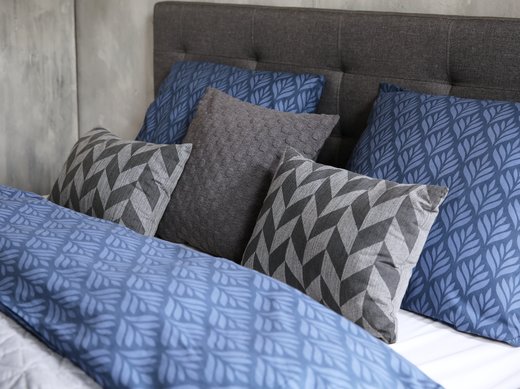
Environment photos for In-store
A wide array of formats are used in environment photos for in-store displays, so photos are taken as desired. In-store photos must feature the right ambience and do not necessarily need as much product focus. The products’ details should preferably not be visible; instead, the photo should recreate an atmosphere or a situation around a product group. This is because the poster material for which the photos will be used often has a longer lifetime than the products featured in the photos.
- Stilleben and mix and match
-
StillebenA stilleben (Still life) is a type of environment photo in which a number of products are consciously arranged to show that the scene has been set up. This can be done by showing the viewer that the photo was taken in a studio. For example: part of the photography equipment can be shown; the products can be displayed in an unrealistic arrangement; or a half-painted wall can be shown in the background. These photos are almost always taken straight on, and suitable focus is to be directed towards the products. In these arrangements, there is no primary or secondary product, as all of the products basically receive the same amount of attention. These photos can be useful when it is not possible to create a realistic arrangement for an environment photo, but where a little more warmth and ambience are desired than one finds in a cut out photo (e.g. for a product series, several products at once or in an unrealistic arrangement).

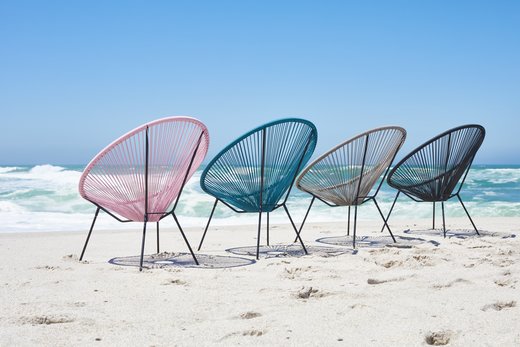
Mix and match
Mix and match photos are another type of environment photo that resemble still lifes, and they are primarily used when photographing matching textiles that are arranged to show different series or a specific trend. These photos also feature unnatural arrangements, but more props are used in them than in cut out photos. For example, there may be an arrangement set up around a chair, in a shelving unit, on a bench, with a special background, etc.
- Function photos
-
A function photo is a close-up shot of a product that clearly displays how it works. Showing a product’s function often involves depicting motion, such as a pull-out piece, a special closing feature, an LED light or a remote control.
- Detail photos
-
A detail photo is a close-up shot of a product detail, such as a pattern, a quality etc. Detail photos can also be close-ups of certain details in a photo setting – which are first and foremost JYSK prop items – and these photos are intended to serve as inspiration in online catalogues or on a website, for example.
- Model photos
-
The purpose of using models in photos is to add personality and visual attraction in the media in which they appear. Model photos should communicate emotions and atmospheres such as life, happiness, warmth, cosiness and relaxation. The models we use should appear as ‘natural’ as possible, look fit and healthy, and be ‘everyday attractive’. We primarily use models with a Scandinavian look to reflect our heritage. The models should wear typical Scandinavian clothes, preferable one coloured and without visible logos/brands. The model can make eye contact and smile to the camera, but models can also be used in more ‘authentic’ situations in which there is no direct eye contact or smiling. We should preferably feature models engaged in different activities, such as playing ball, playing games, knitting, etc. and to a lesser extent posing. Models can also be in motion, so that the viewer only sees a blurred image of a person in the photo. Models are only used in special occations. Models are always on a total buy-out contract for all time and all media unless explicitedly stated.
MOOD photos
MOOD photos feature models in various situations or with different product groups. In these photos, the model is the focus, as the purpose of mood photos is to highlight the human element. MOOD photos should exude life and happiness – in short, happy people. These photos are used in special cases but can be used in all media.

Cut out photos with model(s)
In cut out photos with models, the products are still the main focal point, even though some focus will inevitably be drawn from the products as more elements are included in the photo. For example in a photo of a duvet + pillow along with the model – here, it is important that the duvet and any features are clearly visible. Avoid rolling up the duvet, and remember what the primary and secondary products are. When photographing a duvet and pillow, for example, it is often the duvet that is the primary product, and it must thus be the most visible element. On this cut out photos with model we mostly want the model to have eye contact with the camera. This type of photo is only used in special cases. E.g. Lars Larsen in a JYSK birthday campaign.
Environment photos with model(s)
In an environment photo with a model, the product must still be the focal point, but the model is included to add visual appeal and life to the photo. Because these photos are used in campaign papers, it is important for the model to not take up too much space outside of the ‘frame’ around the actual products. The reason for this is that these photos are often closely cropped, and an incorrectly positioned model risks becoming cut out of the picture so that only half of his or her body is left visible. In environment photos with models used on websites, the frame is larger, which means the model can take up more space or be blurred into the background.
For all of our model photos, there must be a total buy-out agreement on time and use in place, and when we use internal models, they must sign an acceptance form.
- Christmas photos
-
Christmas is celebrated and decorated differently in the countries in which we publish photos. But when we take Christmas photos – both product and MOOD photos – we use Scandinavian traditions and decorations, i.e. Christmas trees, presents with ribbons, etc. These photos should preferably feature child models, or children pictured with adults if models are used.
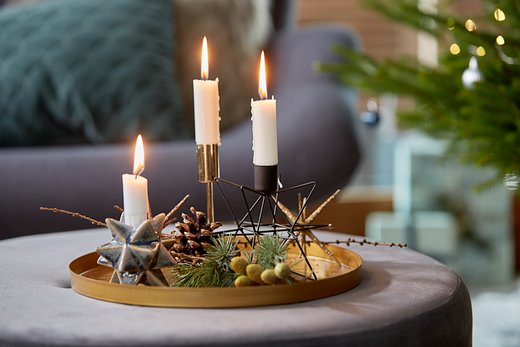
- Props
-
Props are used in environment photos. Props are the ‘filling’ that surround the primary and secondary products, and they are intended to help create as warm, cosy and authentic Scandinavian expression as possible. Props can also help to accentuate the function of certain products, such as by using a piece of jewellery in a jewellery cabinet. Similarly, props can also be used to illustrate the size of a product. Sometimes props also help to sell a dream, such as pressed shirts hanging in a JYSK wardrobe.
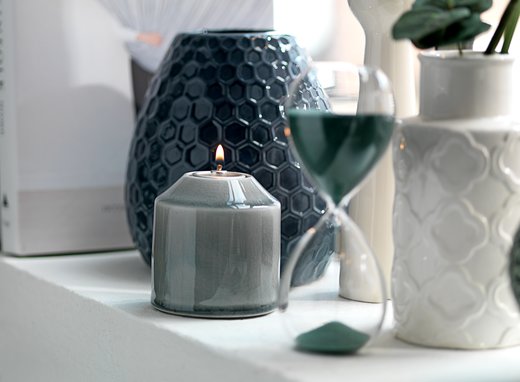
Props are not the focal point of room setting photos (unless the prop items happen to be primary products), so it is always a matter of balancing out how much space they should occupy. For example, we can show bed linen on a mattress if we still show part of the top mattress.
No-name props
Props may consist of both JYSK products – typically, textiles, houseware and smaller furniture pieces – and products not sold at JYSK. We combine JYSK prop items with other no-name items to create a more lively and natural atmosphere. No-name prop items must not outmatch JYSK’s products. This means that if JYSK sells a similar product, then we cannot use a corresponding no-name product. For example, JYSK sells throws, which means we cannot use a no-name throw. However, we can use a large, no-name glass vase if JYSK only sells small glass vases. To the furthest extent we use JYSK props. All prop items used in room setting photos should underpin and contribute to JYSK’s Scandinavian Expression.
No other familiar brands
We should never use familiar brand names, such as Apple computers or Royal Copenhagen porcelain. If we use a computer in a given setting, the photo must be re-touched to remove the brand name or logo. When we use products that are not our own, then it is important that they are neutral items, i.e. old items or things without specific characteristics. An item with a specific characteristic can be turned away from the camera so that it appears as nondescript.
Props and country differences
JYSK’s prop items (textiles + smaller products) do not need to be active in all countries in which the photo is used. Among other reasons, this is generally because there is a greater degree of differentiation between the countries when it comes to prop items, which also have a shorter lifetime than the primary products used in our photos. The photo team does, however, try to incorporate pillows, throws and rugs as often as possible with regards to the different country groups, and as long as this does not detract from JYSK’s Scandinavian Expression. The photo team divides prop items into the following groups: All, Nordic and CE. Props are not registered in Media Management photo orders unless specifically agreed upon.
- Technical photo specifications
-
Specifications for supplier photos
If we receive photos from suppliers, then the reference photos from the product groups’ matrices are to be forwarded to specify the correct angle and lighting.
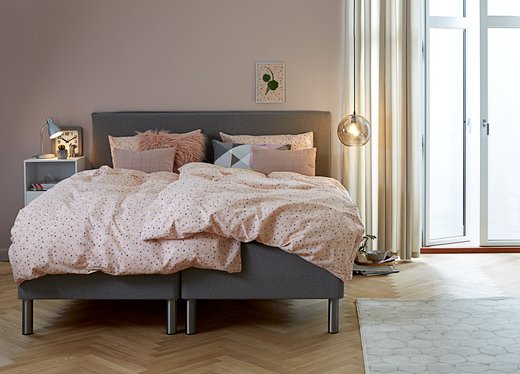
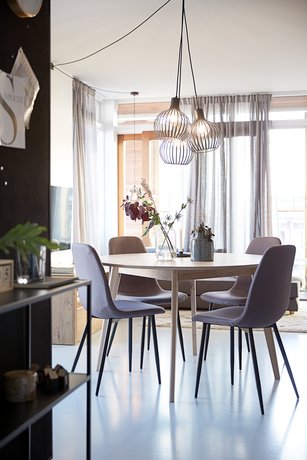
The technical specifications for the photos are:
TIFF files 300 dpi 25 cm long or wide
Cut out photos must be cropped (crop tool) as closely around the product as possible to ensure a uniform look of our products online.
